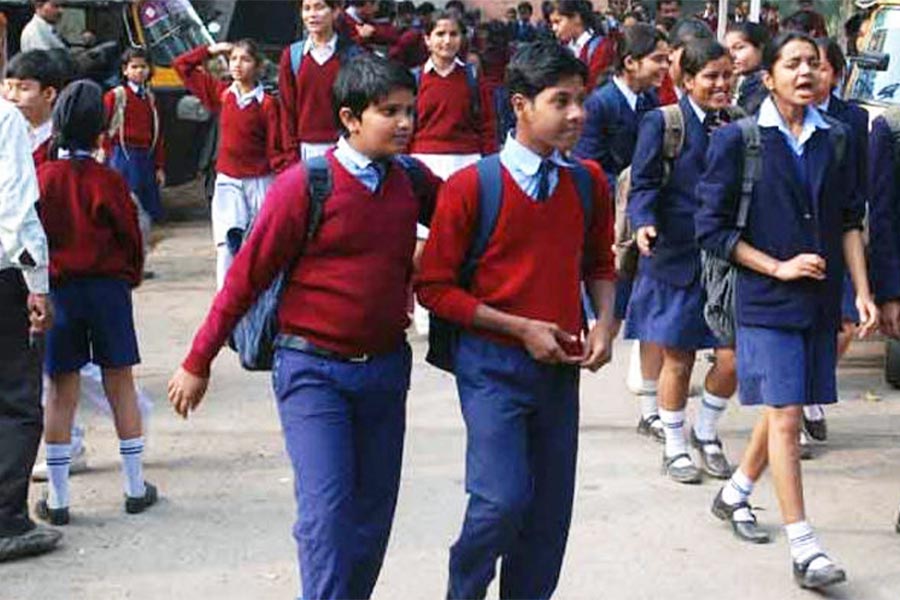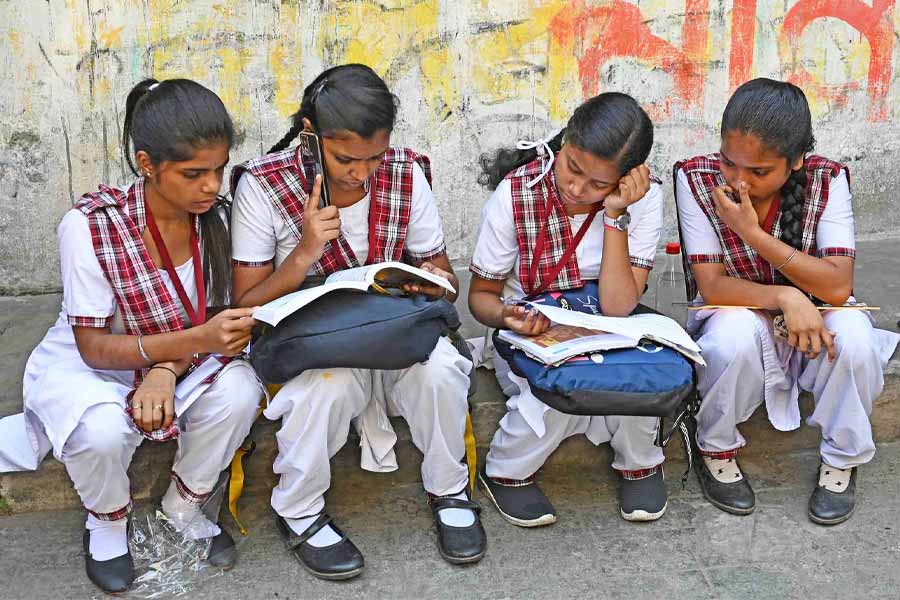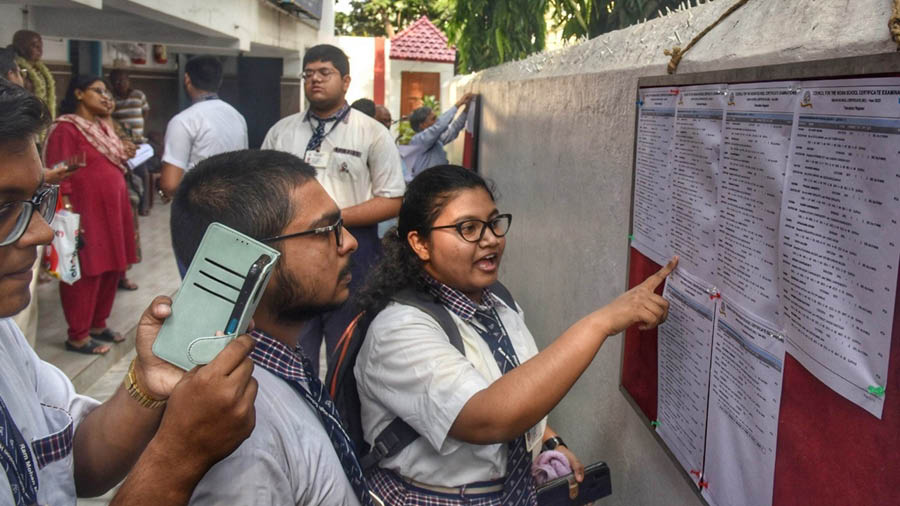On the day of the solar eclipse, a reader of My Kolkata shared a picture of a circular rainbow seen in Kolkata. It was beautiful and brought to mind all the different imagery of rainbows and their meanings. The one that sticks is the legendary rainbow after the flood in the Bible. This was interpreted as the promise of things to come. The season of spring is poetically the promise of the future, the darling buds of May. In the world of education, too, it is the excitement of a new school year, new classrooms, new teachers (hopefully) and new textbooks. Or old, depending on which millennium you were born.
In the one in which I was born, there was something called ‘Book Mart Day’ — this was an entire day when students of senior classes could be found in classrooms selling their old textbooks to the next batch of students. Each room was classified, and high-pressure ‘salesmen’ would attempt to earn a buck by recycling their old books to young hopefuls. This worked like a charm, saving hundreds of rupees for the buyers and recycling the money for the sellers who promptly shifted focus to their new classroom to buy old books.

‘Book Mart Day’ was an entire day when students of senior classes could be found in classrooms selling their old textbooks to the next batch of students
Alas! Book Mart Day went down the drain or to the bikriwallah when publishers discovered wealth. Not wealth of knowledge, but wealth in creating a new edition every year, with page numbers and the front cover changed for cosmetic recognition. It has always been my suspicion that ‘subjects’ in schools were created by publishers and book writers. My theory is based on National Geographic and similar magazines and channels. In their stories, they cover geography, biology, physics, math, all ensconced in a beautiful, readable language, primarily English literature. But you can’t prescribe NatGeo for schools. Nor can you make ‘tests’ out of it. Nor can you hire subject matter experts to teach. If you go back a few more millennia, our great teachers of the past sat under shady trees and taught without texts — they knew, just knew.
One teacher, many subjects, many texts
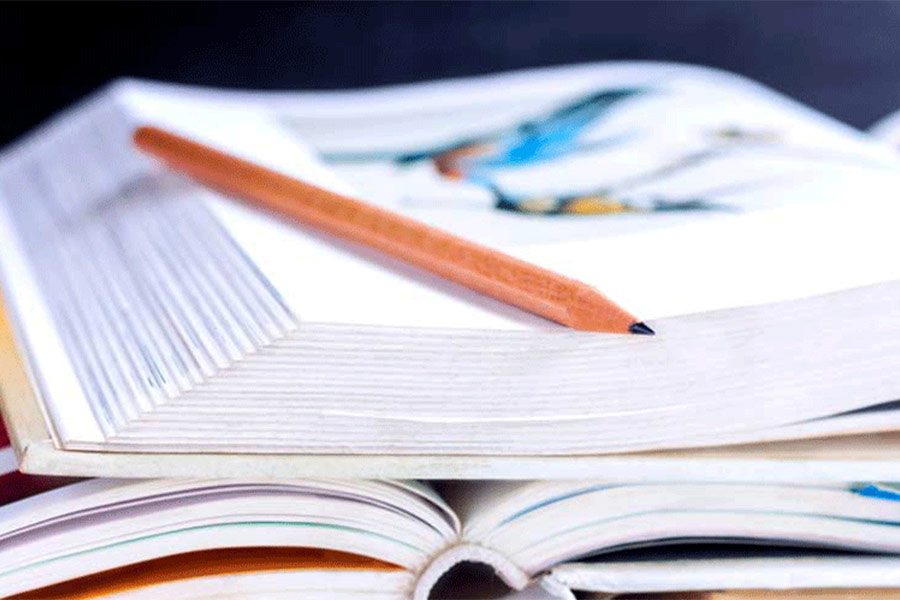
Now that we have to purchase new ones every year, we might as well revel in the smell of fresh textbooks
ShutterstockAn oft-told semi-serious joke goes: “If I have to learn all the subjects, why can’t my teacher teach all the subjects?” It’s because there are different textbooks, simple? My conspiracy theory revolves around the frenzied activity towards the end of the year. Publishers would come, bearing gifts and books, to schools in the hope that their books would be selected for the curriculum.
But back to the text books. Now that we have to purchase new ones every year, we might as well revel in the smell of fresh textbooks. Before mum could get hold of them to cover them in brown paper — so they could be sold at the Book Mart next year — we had already started leafing through the pages, looking at the pictures and promises of things to come. Brown paper was bought in rolls from the stationery shop. Text and exercise books were covered with minimum wastage, skimping corners and fitting smaller books between larger ones. And this was carried forward to the exercise books.
Exercises for all

At the end of year, mum would collect the exercise books and carefully extract the unused pages, bind them into ‘scribble pads’
ShutterstockWe all learnt the art of proper book jacketing, long before the regime had decided that (a) that you must buy exercise books with the school name printed on it, and (b) that you must buy readymade jackets with the school label on it. Two Factor Authentication. No chance of finding your book in another school, was there? Also, it promoted “uniformity” and one suspects, a slightly better distribution of wealth among book sellers.
We had no such qualms. There were five of us schoolgoing children in one house. My dad would go to Bagree Market and buy exercise books by the kilogram. Does anyone remember Banga Lipi? It was fountain pen friendly and cheap! And I suspect that Sulekha is actually bringing it back this year.
Classmate by ITC made its appearance when my kids went to school. Excellent quality, but schools wanted their own brand. So ITC created brands for schools — everyone’s delighted. Our poor, deprived existence had not heard of Luxor or Paperkraft notebooks with five subject tabs and spiral binding. Our single-pin stapled exercise books made it easier to pull out pages from the middle. And at the end of year, mum would collect the exercise books and carefully extract the unused pages, bind them into ‘scribble pads’ with a hefty stitch at the top or side.
Growing pains and uniformity
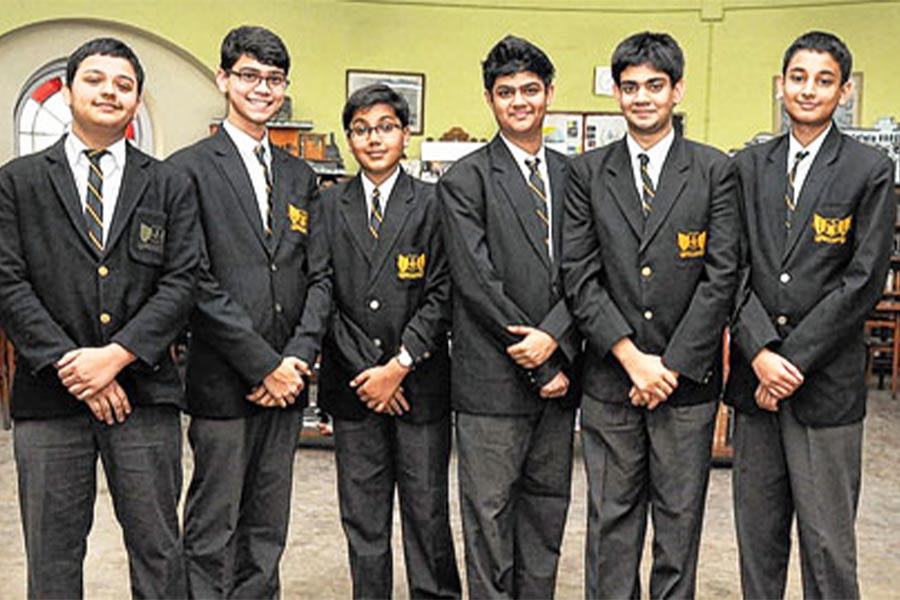
Gone are the days of plain white uniforms with a belt or badge to identify the school. We now have checks, stripes, ties, colours and badge-strips that would make an army proud
TT ArchivesWorldwide, there has been an ongoing debate on whether school uniforms are good or bad for you. For one thing, in the growing years, one tended to pop out of one’s uniform fairly regularly. Growth spurts were not dictated by the academic year. In our house the expected hand-me-downs never worked because our sizes were inversely proportional to our ages! But my mum was a seamstress, with a certificate from Singers and an ancient foot-operated machine too. She stitched shorts for the boys, pinafores and blouses for the girl and was on button-patrol almost daily! This could have been the cheapest production centre ever, Metiabruz notwithstanding. The joy did not last the millennium. My kids had to buy their uniforms from a specific place, and often a specific person too. This ensured that everyone in the class was equal, though the unequal ones tended to float around freely in oversized shirts or purchase belts to keep their nether-lands unexposed. The “healthier” ones just bought larger sizes. My mum’s secret was to add a couple of inches around the waist and insert some strong elastic so that the rise and fall of the tummy was beaten by the mummy.
I am tempted, at this point, to delve into the multiple fashion statements that schools now make. Gone are the days of plain white uniforms with a belt or badge to identify the school. We now have checks, stripes, ties, gaudy colours and badge-strips that would make an army proud. Not to mention the plethora of positions of responsibility from Prefect to Captain to Head Girl/Boy all of which make getting back to school something to look forward to — the promise of the rainbow.


